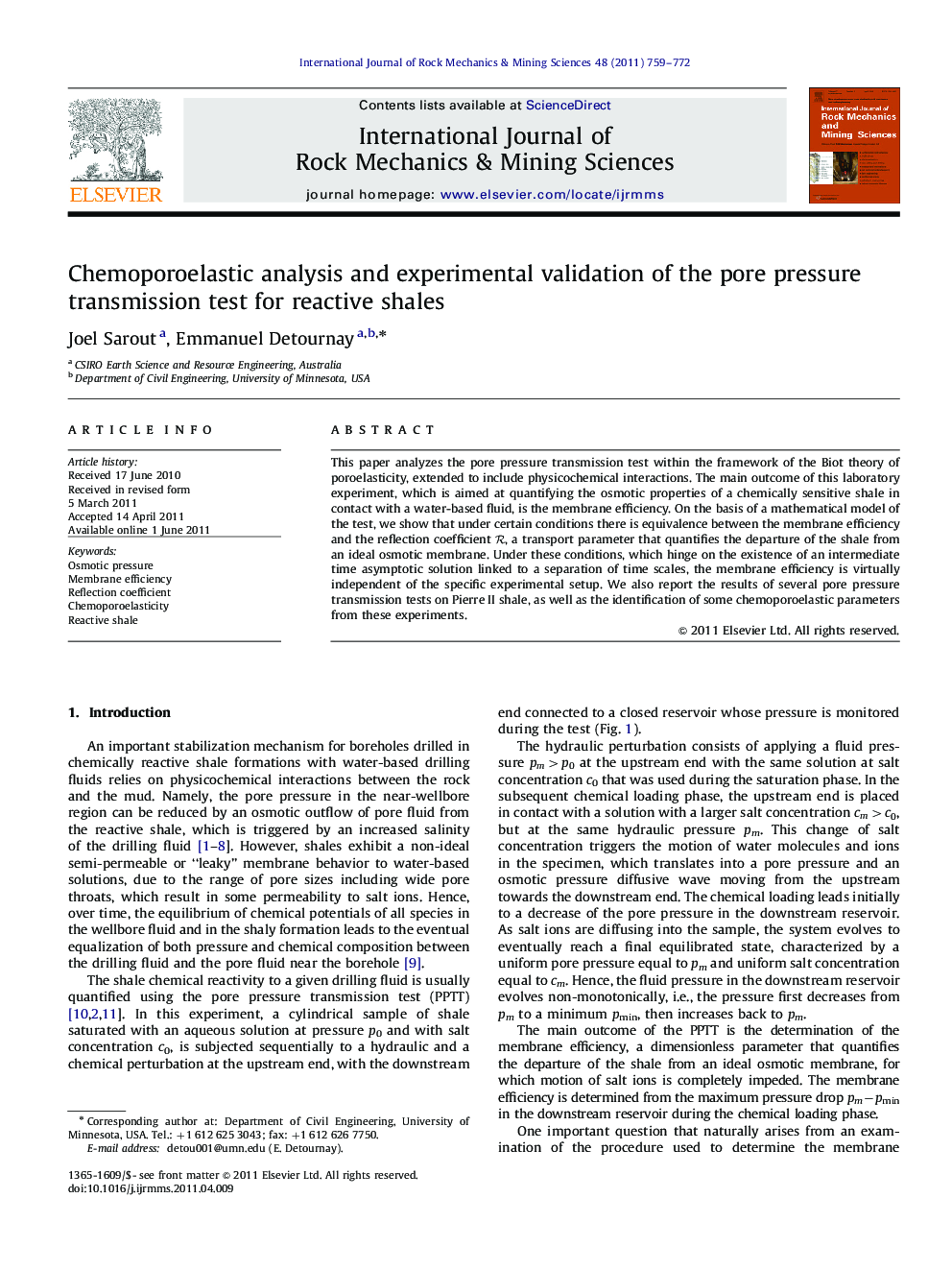| Article ID | Journal | Published Year | Pages | File Type |
|---|---|---|---|---|
| 809733 | International Journal of Rock Mechanics and Mining Sciences | 2011 | 14 Pages |
This paper analyzes the pore pressure transmission test within the framework of the Biot theory of poroelasticity, extended to include physicochemical interactions. The main outcome of this laboratory experiment, which is aimed at quantifying the osmotic properties of a chemically sensitive shale in contact with a water-based fluid, is the membrane efficiency. On the basis of a mathematical model of the test, we show that under certain conditions there is equivalence between the membrane efficiency and the reflection coefficient RR, a transport parameter that quantifies the departure of the shale from an ideal osmotic membrane. Under these conditions, which hinge on the existence of an intermediate time asymptotic solution linked to a separation of time scales, the membrane efficiency is virtually independent of the specific experimental setup. We also report the results of several pore pressure transmission tests on Pierre II shale, as well as the identification of some chemoporoelastic parameters from these experiments.
► The theory of chemoporoelasticity is reformulated as an extension of the classical Biot poroelasticity ► The relative increment of salt content is shown to be conjugated to the osmotic pressure. ► The “Pore Pressure Transmission Test” (PPTT) is solved with a “reservoir” boundary conditions. ► A detailed analysis of the time scales of this problem is conducted. ► The results of an experimental program involving the PPTT are reported.
